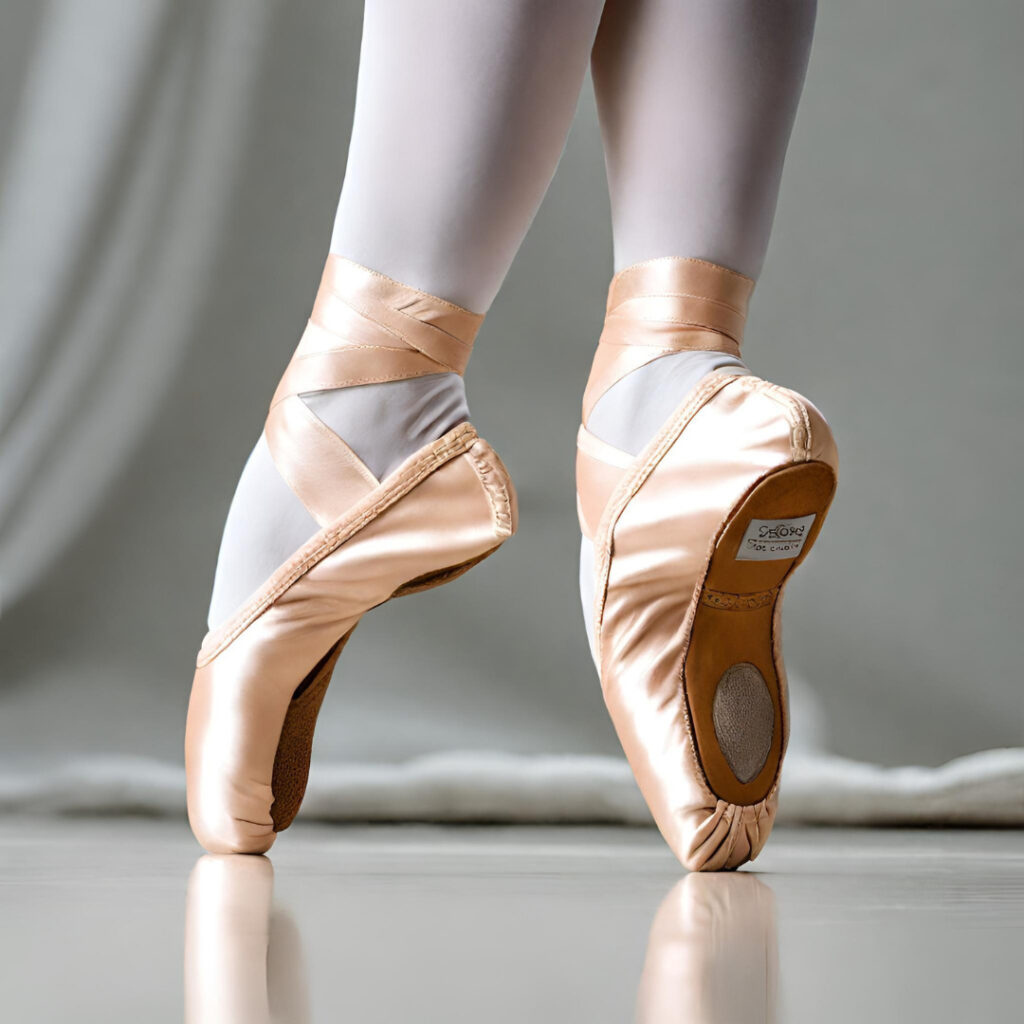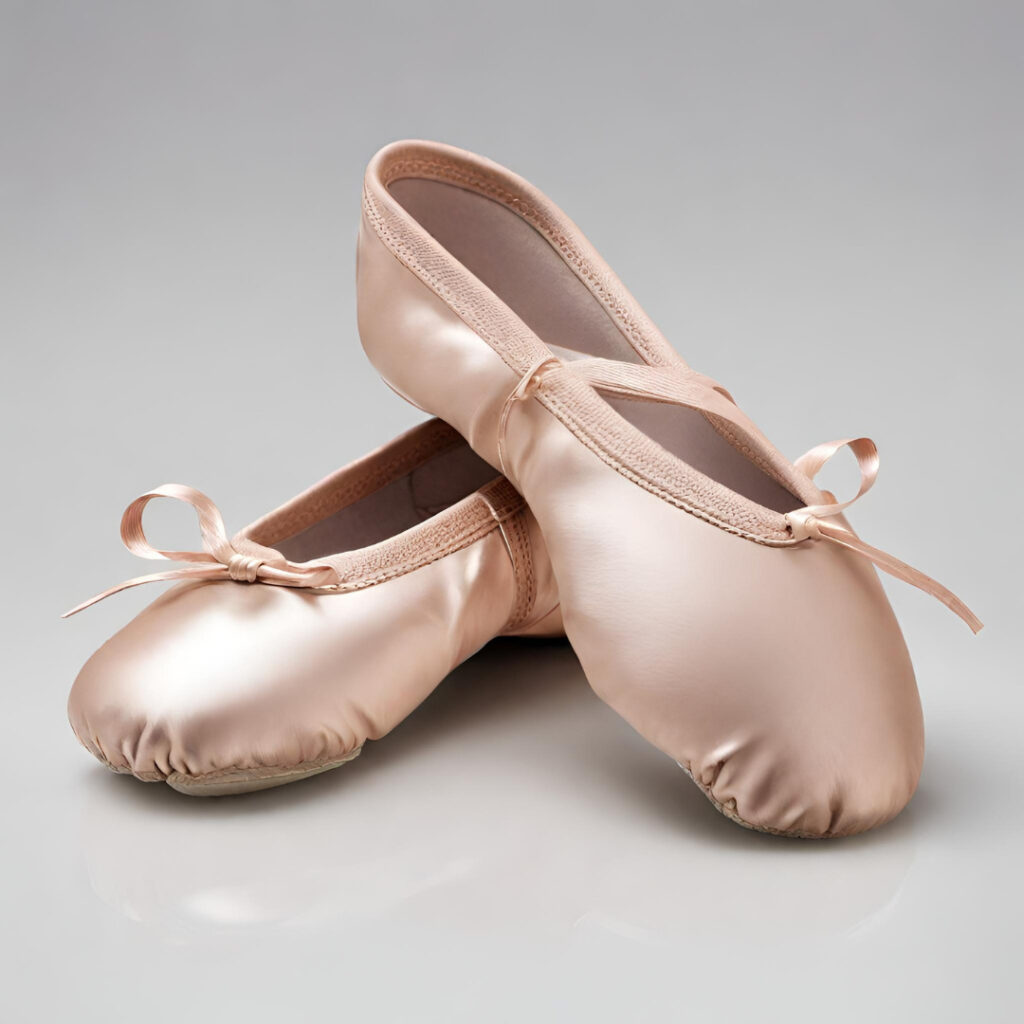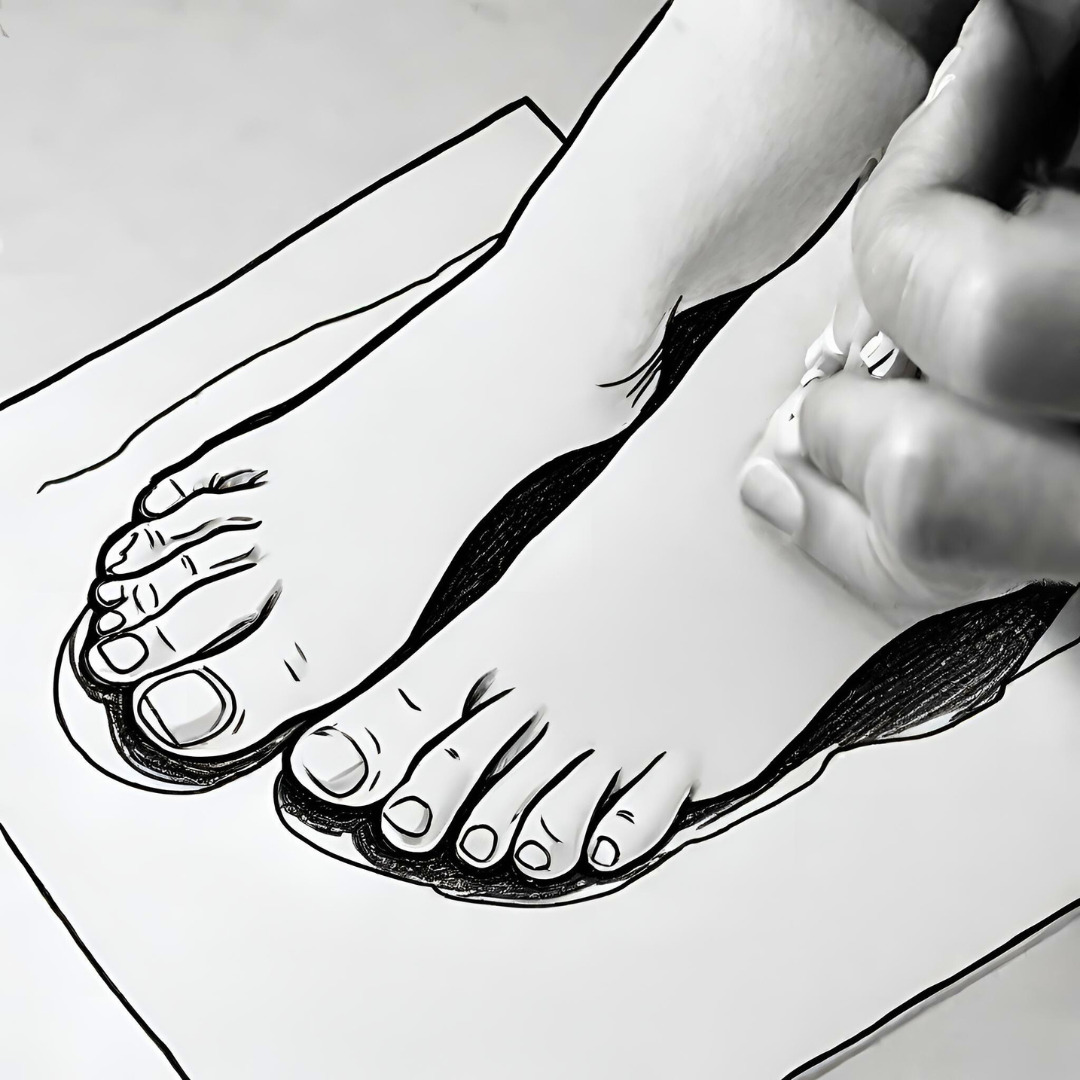Roman feet, often referred to as ‘Grecian’ feet, are characterized by a longer second toe. This unique foot shape necessitates special consideration when selecting pointe shoes for ballet.
It is a distinctive foot shape characterized by a prolonged second toe compared to the big toe. This unique anatomical trait results in the second toe being more prominent, extending beyond the big toe.
Roman feet represent one of several distinct foot types, each with its own defining characteristics. The term “Roman feet” commonly arises in conversations concerning footwear, notably within the realms of ballet and dance.
Dancers with Roman feet necessitate specialized pointe shoes that accommodate the extended second toe, ensuring optimal support and comfort during performances.
The consideration of foot type becomes pivotal in the quest for proper fit, serving to mitigate discomfort and minimize the risk of injury, particularly in activities that impose significant demands on the feet, such as ballet.
Table of Contents
What Do Ballet Dancers with Roman Feet Need Special Ballet Shoes?
In this article, we will delve into the specific reasons why Roman feet demand special pointe shoes, addressing both the functional and aesthetic aspects. Here are some of the facts about ballet shoes:
Proper Weight Distribution
One primary reason for the need for specialized pointe shoes lies in the way Roman feet distribute weight. The longer second toe can lead to uneven weight distribution across the foot.
Standard pointe shoes may not adequately address this issue, resulting in discomfort, instability, and potential injuries during ballet performances.
Specialized pointe shoes are designed to rectify this imbalance and provide a more even weight distribution, promoting dancer comfort and safety.
Targeted Arch Support
Roman feet often exhibit variations in the arch shape compared to other foot types. Specialized pointe shoes are equipped with tailored arch support systems to accommodate these unique arch characteristics.
This support ensures that dancers can maintain proper arch alignment, helping them achieve a graceful line and optimal foot posture while performing intricate ballet movements.
Enhanced Comfort and Performance
Comfort and performance are of paramount importance in ballet. Pointe shoes designed specifically for Roman feet enhance comfort levels, allowing dancers to focus on their artistry without being hindered by ill-fitting shoes.
The snug fit and ergonomic design of these shoes are engineered to optimize performance by offering the necessary support and flexibility required for ballet’s demanding footwork.
Injury Prevention
Wearing pointe shoes that do not accommodate the distinctive features of Roman feet can increase the risk of injuries. Specialized pointe shoes help mitigate this risk by providing a secure and supportive fit.
They reduce the likelihood of issues such as blisters, bunions, and stress fractures, thus contributing to the overall health and longevity of a dancer’s career.
Aesthetic Considerations
Ballet is not only about technique but also aesthetics. Dancers with Roman feet often aim for an aesthetically pleasing line in their feet during performances.
Pointe shoes tailored to Roman feet aid in achieving this desired aesthetic, enhancing the visual appeal of the dancer’s footwork. This alignment with aesthetic expectations is a crucial aspect of successful ballet performances.
What Are The Characteristics Of Suitable Pointe Shoes
Pointe shoes for Roman feet are designed in a way that should possess specific characteristics to ensure a comfortable fit. Some of the vital characteristics of these shoes are as follows:
1. Wide Toe Box
If you’re a professional ballet dancer or even starting out, you must ensure that the ballet shoes contain ample room for the longer second toe. It prevents crowding and discomfort during the movements.
2. Low Vamp Shoes
Low vamp shoes are a boon for ballet dancers with Roman feet, offering a host of benefits that cater specifically to their unique foot structure and needs.
They feature a design that exposes more of the top of the foot, allowing greater flexibility and reducing pressure on the longer second toe.
This increased comfort is particularly beneficial for individuals with Roman feet, as it minimizes the discomfort that can arise from the second toe pressing against the shoe’s vamp.
One of the essential aspects of ballet is achieving a graceful and visually appealing line in the foot during performances. Low vamp shoes facilitate this by allowing the dancer’s arch to be more visible and elongated.
3. Flexible Sole Shoes
Flexible sole shoes are a valuable asset for ballet dancers with Roman feet, offering several advantages tailored to their unique foot structure and the demands of ballet.
Ballet dancers with Roman feet often contend with distinctive arch shapes. Flexible sole shoes are designed to allow for better arch flexibility, accommodating the unique arch structure of Roman feet.
Pointe work in ballet necessitates precise control of the foot, and flexible-sole shoes play a pivotal role in enhancing this control. These shoes permit greater articulation of the foot, allowing dancers to execute pointe movements with increased precision and fluidity.
These shoes, on the other hand, provide a more comfortable fit by allowing the foot to move more naturally within the shoe. This helps minimize discomfort during long rehearsals and performances.
4. Russian Pointe Shoes
Russian pointe shoes have earned a distinguished reputation in the ballet world and offer distinct advantages to ballet dancers with Roman feet.
These specialized pointe shoes are thoughtfully designed to accommodate the unique characteristics of Roman feet, making them an excellent choice for dancers with this foot type.
These shoes are celebrated for their exceptional arch support. They feature is paramount for Roman feet, which often exhibit a different arch shape compared to other foot types.
The robust arch support in Russian pointe shoes facilitates a graceful line and proper arch alignment, elevating the aesthetics of their footwork.
Russian pointe shoes frequently offer customization features, enabling dancers to tailor the fit to their precise foot shape. This proves particularly advantageous for individuals with Roman feet.
Dancers with Roman feet can choose from a wide array of styles and models, ensuring they find the perfect fit for their distinctive foot structure.
5. Grishko shoes
Grishko shoes are a well-regarded choice among ballet dancers, particularly those with Roman feet. These pointe shoes are specifically designed to cater to the unique characteristics of Roman feet, offering a range of benefits that make them an excellent fit for dancers with this foot type.
Roman feet often possess a distinct arch shape compared to other foot types, and Grishko’s commitment to tailored arch support helps dancers achieve an elegant line and maintain proper arch alignment during performances.
The level of customization these shoes provide is invaluable. they provide a comfortable fit for individuals with Roman feet, minimizing the risk of discomfort and injuries during their ballet routines.
Maintaining proper balance is fundamental in ballet, and Grishko pointe shoes excel in providing stability. These shoes offer the necessary support while allowing the dancer’s foot to adapt and respond to changes in weight distribution, crucial for maintaining equilibrium during complex choreography.
How to Choose Pointe Shoes?
Selecting the perfect pointe shoes is a crucial decision for ballet dancers, especially if you have Roman feet. Your feet are unique, and finding the right fit is essential to enhance your performance and prevent discomfort.
We have discussed above how different types of pointe shoes are and how they are helpful for dancers with Roman feet. You may have developed an understanding of how specific types of pointe shoes can withstand the pressure and mold your feet with pointe shoes.
Wide Platform:
Roman feet are typically wider than other foot types, so you will need a pointe shoe with a wide platform to accommodate this. This will help to distribute your weight more evenly and prevent your toes from being cramped.
Shallow box:
Roman feet also tend to have shorter toes, so you will need a pointe shoe with a shallow box. A deep box can put too much pressure on your toes and lead to pain and injuries.
Firm shank:
A firm shank will provide the support you need to balance en pointe, especially if you have Roman feet. A shank that is too soft will not provide enough support, while a shank that is too hard can be uncomfortable and difficult to dance in.
Some recommended brands and models of pointe shoes for Roman feet include:
- Bloch Hanami

The Hanami has a tapered toe box, which can help to keep the toes in place and prevent them from slipping. The shoe is also made with soft, flexible leather, which can help to reduce friction and prevent blisters.
- Grishko 2007 Pro

The 2007 Pro has a full shank, which provides additional support for dancers with Roman feet. It has soft wings, which can help to prevent chafing and discomfort.
- Capezio Ava

The Ava has a medium shank, which provides a good balance of support and flexibility. It comes with a soft lining, which can help to reduce friction and prevent blisters.
When choosing pointe shoes, it is important to get fitted by a professional. This is especially true if you have Roman feet, as it can be difficult to find a pair of shoes that fit well and provide the
support you need. However, there are some companies that are specifically making pointe shoes for Roman feet, so you can try them if you like.
Here are some additional tips for choosing pointe shoes for Roman feet:
- Try on several different pairs of shoes before buying. It is important to find a pair that fits snugly but comfortably. The shoes should not be too tight or too loose.
- Don’t be afraid to ask for help from the fitter. They can help you adjust the shoes to make sure they fit well and provide the support you need.
- Be prepared to spend some money on pointe shoes. A good pair of pointe shoes can cost several hundred dollars. However, it is important to invest in a good pair of shoes to protect your feet and prevent injuries.
- Once you have found a pair of pointe shoes that fit well, it is important to break them in gradually. Start by wearing them for short periods of time and gradually increase the amount of time you wear them as they break in.
- It is also important to listen to your body when dancing en pointe. If you are experiencing any pain, stop and take a break. It is important to avoid pushing yourself too hard, especially when you are first starting to dance en pointe.
Here are some additional tips for dancing en pointe with Roman feet:
- Focus on your alignment. It is important to make sure that your alignment is correct when dancing en pointe, as this will help to prevent injuries.
- Engage your core muscles. Your core muscles will help to support your body and keep you balanced en pointe.
- Don’t be afraid to bend your knees. It is okay to bend your knees a little bit when dancing en pointe. This will help to absorb the shock and prevent injuries.
- Take breaks. It is important to take breaks when dancing en pointe, especially if you are new to it. This will help to prevent your feet from getting too tired or sore.
- With a little practice and patience, you can learn to dance en pointe with Roman feet. Just be sure to choose the right pointe shoes, get fitted by a professional, and listen to your body.
How To Measure Roman Feet For Pointe Shoes?
It is very simple to measure the size of a Roman foot for ballet shoes. Just take a measuring tape and a blank paper to measure your foot size. Follow the steps below to get the desired results:

- Place your foot on the piece of paper and trace around it with the measuring tape. Measure the length of your foot from the tip of your longest toe to the back of your heel.
- Measure the width of your foot at the widest part of your forefoot.
- Measure the circumference of your foot at the widest part of your forefoot.
- Once you have taken these measurements, you can use a pointe shoe sizing chart to find the correct size of pointe shoes for your feet.
- It is important to note that pointe shoe sizes can vary from brand to brand, so it is always best to try on pointe shoes before you buy them.
Here are some additional tips for measuring Roman feet for pointe shoes:
- Make sure to measure your feet at the end of the day, when they are at their largest.
- Wear the type of socks or tights that you plan to wear when dancing en pointe.
- Have someone else help you to measure your feet, if possible. This will help to ensure that your measurements are accurate.
- Once you have found the correct size of pointe shoes for your feet, it is important to get fitted by a professional. A professional fitter can help you adjust the shoes to make sure that they fit well and provide the support you need.
Here are some facts about Roman feet that may be helpful when choosing and fitting pointe shoes:
- Roman feet are typically wider than other foot types.
- Roman feet also tend to have shorter toes.
- Roman feet may have a higher arch than other foot types.
- It is important to choose pointe shoes that have a wide platform, a shallow box, and a firm shank. These features will help to support your feet and prevent injuries.
How To Modify Pointe Shoes To Make Them Fit For Roman Feet?
Even if you can’t find the perfect pointe shoes for Roman feet, you can use the ones available and do some modifications to them to make them compatible with Roman feet. Use the following tips to achieve the desired results for fitting pointe shoes for Roman Feet:-
Add Padding To The Toe Box: This can help to reduce pressure on the toes and prevent blisters. You can use foam padding, silicone toe caps, or gel toe inserts.
Shorten The Shank: This can make the shoes more flexible and easier to balance. You can have the shank shortened by a professional cobbler.
Stretch The Wings: This can make the shoes more comfortable and prevent chafing. You can stretch the wings by gently pulling on them with your hands.
Cut A Hole In The Platform: This can help to relieve pressure on the toes and bunions. You can use a sharp knife or scissors to cut a small hole in the platform.
It is important to note that modifying pointe shoes can affect their performance and durability. It is important to consult with a professional pointe shoe fitter before modifying your shoes.
Here are some additional tips for modifying pointe shoes for Roman feet:
When adding padding to the toe box, make sure to use a material that is thin and absorbent. You don’t want to add too much padding, as this can make the shoes too tight.
When shortening the shank, be careful not to shorten it too much. A shank that is too short will not provide enough support.
When stretching the wings, be careful not to stretch them too much. Overstretched wings can be uncomfortable and may not provide enough support.
When cutting a hole in the platform, be careful not to cut the hole too large. A hole that is too large can weaken the platform and make it more likely to break.
It is important to modify your pointe shoes gradually. Start by making small changes and see how they feel. You can always modify your shoes more if needed.
It is also important to listen to your body when dancing en pointe. If you are experiencing any pain, stop and take a break. It is important to avoid pushing yourself too hard, especially when you are first starting to dance en pointe.
With a little care and attention, you can modify your pointe shoes to make them fit better for your Roman feet. This will help you to dance en pointe more comfortably and safely.

